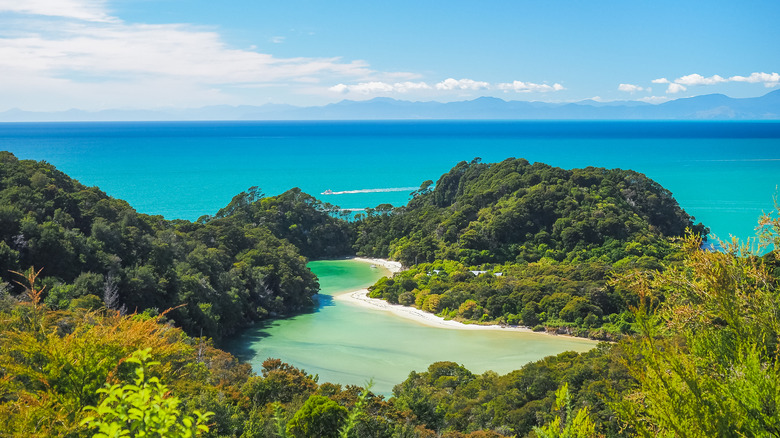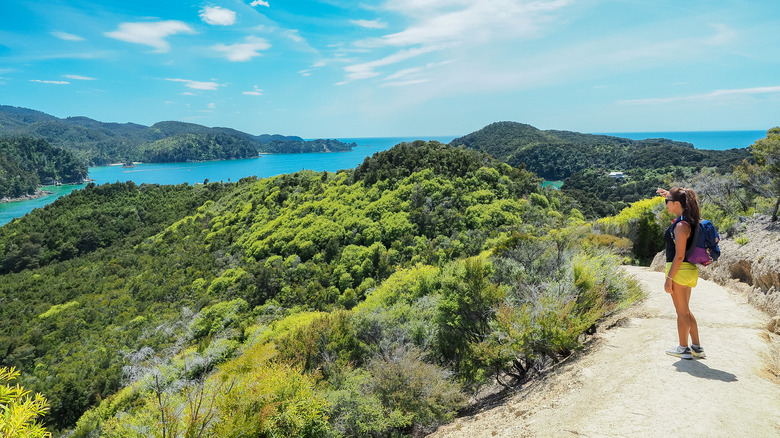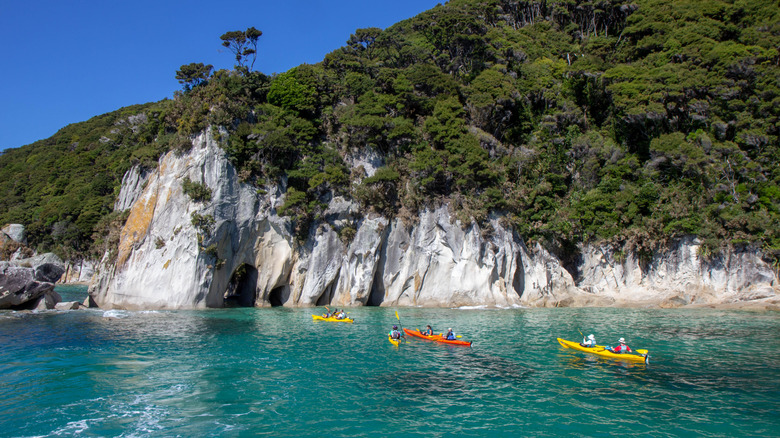Take In All The Beauty Of This New Zealand National Park On Its World-Famous Trail
While New Zealand is blessed with 13 national parks across its two main islands, Abel Tasman National Park may be the ideal destination for marine lovers. It is rated at number 54 in the "100 Must-Visit National Parks Around the World" by Outdoors.com and according to NewZealand.com, the best coastal walk in the country can be found here. The reason it is so picture-perfect is its location at the top of the South Island where sandy beaches abound along its rugged coastline.
Its natural importance is underscored by sustainability and conservation organizations, which are working to preserve and improve the natural diversity here. Named after Dutch explorer Abel Tasman, the park has a pleasant climate all year-round and its evergreen trees stay lush. While on the coastal walk, keep an eye on the ocean as fur seals, orcas, bottlenose dolphins, dusky dolphins and common dolphins can be seen in the Golden and Tasman Bays.
How to hike the Abel Tasman Coast Track
The Abel Tasman coast track is 37 miles long and it takes three to five days to walk in one direction, so it will take longer if you want to make it a round-trip experience. It utilizes a tidal crossing, which means that you will need to look at the tide table before you go. The track starts at Marahau and finishes at Wainui (or vice versa), and it includes a hanging bridge over a lagoon for breathtaking views.
At the end of the track, those who aren't walking back can take a water taxi to Kaiteriteri or Totaranui, or local buses can take you to nearby towns or the city of Nelson, and tour offices can also arrange transfers. The Department of Conservation provides bookable huts and campsites or tour operators provide lodges to stay in along the route. The campsite at Onetahuti Beach has the added bonus of a freshwater pool and glow worm caves to add to the magic of your experience.
How to see Abel Tasman National Park from the ocean
If you prefer to view the land from the ocean rather than the ocean from the land, then try a sea kayaking tour. On an overnight trip, you can paddle to one of the beaches and camp there for the night, where you can watch the sun rise and set over the sea once the day-tripping crowds have gone home. For those who prefer a traditional mode of transport, you can paddle a waka (Māori canoe) with a group of people.
If you don't want to break a sweat, you can sail around the coast while taking in the views of the national park. In and around the Tonga Island Marine Reserve, fur seals, little blue penguins, shag and gannets can be seen. Another landmark is the Split Apple Rock – an unusual formation that is a part of Māori legend. It is also possible to snorkel these clear waters to see even more marine life. If you manage all of these seafaring activities, then you certainly deserve a picnic on the beach!


